The fauna and flora of polar regions: Antarctic
The polar regions are deserts of ice and snow, swept by powerful winds. They are among the most inhospitable places on Earth. At the northern end of our planet lies the Arctic, made up of about 30 percent land and 70 percent ocean. In summer, the ground is covered in the tundra vegetation that is typical of the Arctic. Around the Earth’s South Pole lies Antarctica, a mountainous continent covered in a thick sheet of ice and surrounded by the Southern Ocean. With an average temperature of less than –57°C at its center, this very dry and windy continent is the coldest place in the world. The freezing waters of the polar oceans are covered in a layer of floating ice, called pack ice. Whether they live in the oceans or on land, the animals of the polar regions have adapted perfectly to the extreme conditions in their environment.
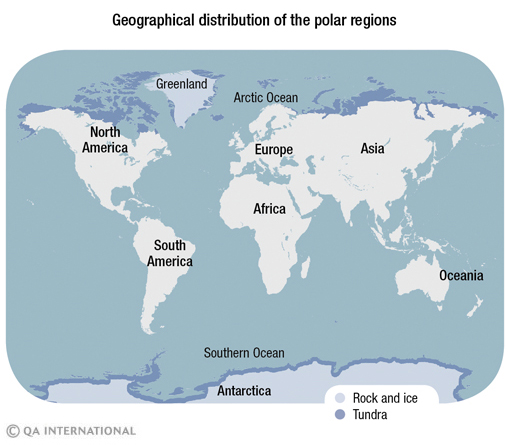
The polar oceans
The polar oceans teem with life. In spring and summer, the pack ice partially melts. Sunlight penetrates the water, encouraging the growth of algae. This sudden abundance of food attracts plankton, which in turn attract larger animals such as fish and whales. In the winter, the cold intensifies and the layers of floating ice fuse together again to form pack ice. Many marine animals then migrate to warmer waters in search of food.
The tundra
The tundra is a biome associated with regions whose climate is very cold. It is found mainly in the Arctic lands, on certain islands surrounding Antarctica and at high altitudes in the mountains. Small plants such as mosses, lichens, grasses and dwarf trees grow during a short period in the year.
In summer, the ground on the tundra thaws only on the surface. The layer of soil underneath remains permanently frozen. This layer is called permafrost. In the coldest regions, the depth of the permafrost may exceed 400 m.
In winter, the temperature can drop to –50 °C ! The ground freezes completely and is blanketed in a layer of snow that is generally thin because the air is too dry on the tundra for there to be any significant precipitation. Strong, icy winds sweep across the snow, sometimes exposing the rock underneath.
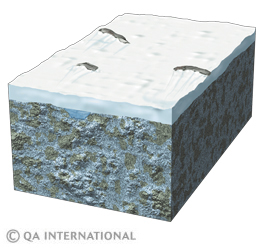
In summer, rising temperatures cause the blanket of snow to melt. The ground absorbs the sun’s rays and thaws on the surface. Blocked by the permafrost, the water cannot be completely absorbed. It soaks the surface layers of the ground, forming ponds and bogs that are soon covered with low, colorful vegetation.
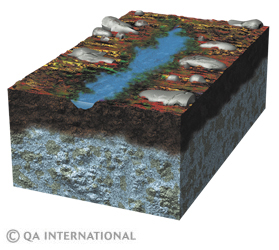
The fauna of the Antarctic region
Antarctica is a continent almost completely covered in ice that is more than 3 km deep in some areas. This vast white desert swept by powerful winds holds the record for the lowest temperature ever recorded: –89°C ! The inhospitable lands of the Antarctic belong to no country and are entirely dedicated to scientific research and tourism. The numerous birds and marine mammals of this region depend on the resources of the Southern Ocean in order to survive, especially on the abundance of small crustaceans called krill.
The humpback whale
The humpback whale (Megaptera novaeangliae) is a cetacean that can measure 15 m long and weigh more than 25 metric tons. This baleen whale travels thousands of kilometers each year, migrating from cold oceans, where it feeds on krill and small fish, to warm oceans, where it reproduces. To establish their dominance and attract females, the males sing songs that last several days and whose sound travels underwater for tens of kilometers.
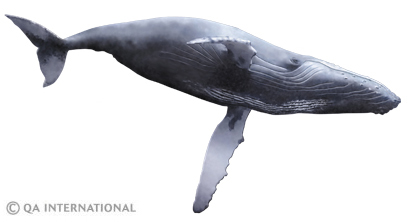
The leopard seal
The leopard seal (Hydrurga leptonyx) gets its name from the small spots covering its back. Hidden under an ice floe, this 3 m-long mammal waits for a penguin or a young seal to dive into the water in order to take it by surprise. Besides other seals and penguins, the sea leopard eats fish, krill and other marine invertebrates. It is one of the largest predators of the Antarctic region.
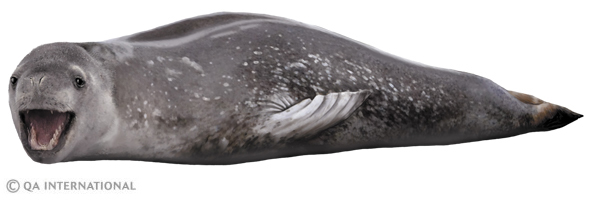
Icefish
There are 15 species of icefish, all of them living in the Southern Ocean. To survive in the freezing water, these fish produce a natural antifreeze. Their transparent blood does not contain hemoglobin, but special molecules that attach themselves to ice crystals as they form. This prevents the fishes’ bodies from freezing, even under the ice.
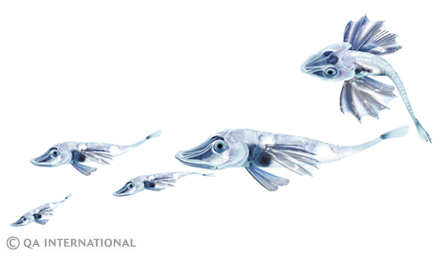
The Weddell seal
The Weddell seal (Leptonychotes weddellii) lives in Antarctica and in the freezing waters that surround this continent. It has a thick coat of insulating fat and dense, waterproof fur that protect it from the cold. This excellent diver spends the polar winter in the water, under the ice. Using its teeth, it pierces holes in the pack ice in order to breathe. The Weddell seal can stay underwater for an hour, searching for fish and squid. Its predators are two other marine mammals: the orca and the sea leopard.
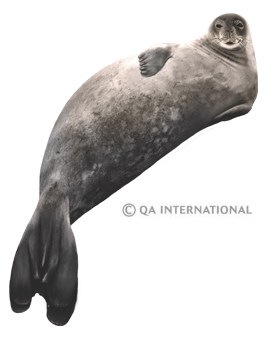
The emperor penguin
The emperor penguin (Aptenodytes forsteri) is one of the rare animals that live exclusively in Antarctica. When it is time to reproduce, these birds that measure 1.2 m in height gather together on the ice in a tight group. Flocking together this way, they are able to withstand the freezing temperatures. Like other species of penguins, emperor penguins are unable to fly. Their wings, transformed into powerful fins, allow them to dive more than 400 m deep to feed on krill, squid and fish.
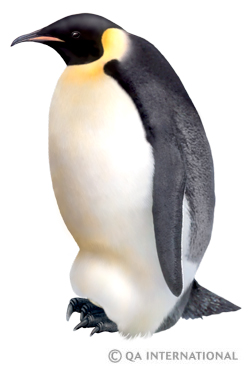
The orca
The orca (Orcinus orca), which can grow to 9 m in length and weigh more than 5 metric tons, is the largest and fastest of the dolphins. It can swim almost 50 km/h and, despite its large size, is able to leap clear out of the water. Although it is found in all of the world’s oceans, this mammal prefers cold waters. Orcas gather together to hunt seals, penguins and sometimes even whales and sharks!
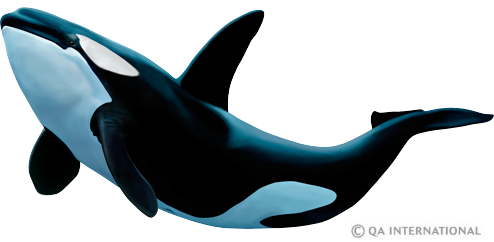
Also see:
- Animal Kingdom section in the Visual Dictionary
- Vegetable Kingdom in the Visual Dictionary
- Fish: from the sea to our plate
- The fauna of the Arctic region




